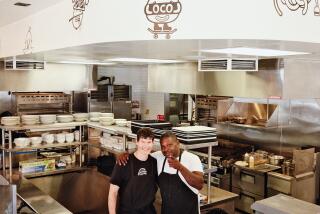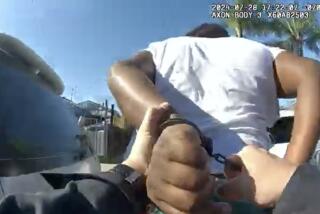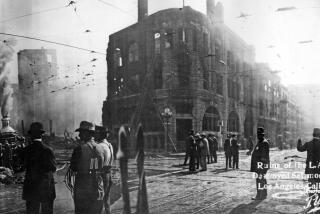Watts: Out of the Fire : Racism: In a community where daily survival is the first order of business, what happened in Watts decades ago isnât that important.
Twenty-five years ago Aug. 11, my brother telephoned me. People had started rioting in the neighborhood, he said. The cleaners at 104th and Avalon streets had been looted. My only suit, a black mohair continental that Iâd lent to him, had been stolen.
I was 22 years old. I was just out of the hospital, where Iâd spent 16 weeks after breaking my neck in an auto accident. I was wearing a full-body cast.
At the news of rioting, my wife turned on the television. For roughly a week, I watched the âcivil unrest,â which came as close as a mile from my house, unfold.
Even though I had heard something about blacks rioting in other U.S. cities, I was unaware of any major issues in the community that could explain what was happening in the streets. Truth be told, I was ignorant of any civil-rights group or network in Los Angeles. My impression was that the NAACP was handling the issue of racism in the courts.
Maybe thatâs why I was surprised by what I was seeing on television. But as the rioting spread and grew more destructive, I became saddened. That sadness, however, turned to anger when the TV images of burning buildings and bleeding blacks sank in. Some of us woke up to the reality of a system drenched in racism.
Racism, as a concept, was not new, of course. As a teen-ager, I often read about it in Jet magazine and the Sentinel. Whenever my parents and relatives discussed black-white relations in the South, they invariably talked about discrimination. It wasnât until my father began working, in 1952, for one of the large aircraft manufacturers did racism become a direct threat to our family.
Over the years I came to realize that the Watts riot was not a planned event, but a spontaneous outburst of community frustration bred by decades of neglect and oppression. As such, it thrust the issue of racism and its harmful effects into the forefront of public consciousness. It provided a starting point for Watts residents to discuss the inequities of the American system. It enabled them to feel that there was something that could be done to eliminate the discrimination that plagued black folks.
As for me, those days in August pushed me toward education as a profession. I read anything that I thought might help me to better understand my and other blacksâ predicament. It was amazing for me to learn that in 12 years of education, I had never read a book by or about a black person--with the exception of the experiences of slaves. By the time I began teaching, in 1968, it became clear to me that the higher one went in the system, the more that black people were âinvisibleâ to whites--politically, socially and culturally.
Ironically, though, the Watts riot has not become part of the lore of the community, a symbol that stands for something beyond the miles of lots that remain vacant 25 years later. In part, thatâs because older folks are getting older and younger, successful folks have moved out, leaving the Watts community in the hands of bureaucrats and vested-interest groups who see a profit in the displacement of the helpless and uninformed.
Watts today has the highest population density per square mile in the county, the highest percentage of people not completing high school, the lowest percentage of college graduates, the highest rate of poverty, the largest percent of blacks and Latinos. Conditions, in general, are worse today than they were in 1965. Black unemployment remains extraordinarily high, the education system has deteriorated, the community is plagued by drugs and gangs.
Perhaps this is why interest in the 25th anniversary of the Watts riot is keener outside the community than within it. Residents who lived through it and children who have only read about it, or heard about it from their parents, have far more pressing, immediate concerns--like getting to the grocery store without being shot. Reflecting on the history of Watts is difficult when the primary business of daily life is survival.
Today I work at Charles R. Drew University of Medicine and Science, at the King/Drew Medical Center. It is an institution that came about as a result of a recommendation of the McCone Commission, which investigated the Watts riot. The report found, it should be recalled, that Watts was a medically underserved community. At the time of the Watts riot, there were virtually no facilities to treat those injured during the rioting. Drewâs mission is to recruit potential doctors and health-care providers from the surrounding community.
Yet the tangible consequences of the Watts riot are few. It did, no doubt, heighten black peoplesâ consciousness of their fate in a society run mostly by whites. But the rioting did not fundamentally alter the mentality that keeps blacks reacting to, rather than shaping, their circumstances. That will require more than a riot.
More to Read
Sign up for Essential California
The most important California stories and recommendations in your inbox every morning.
You may occasionally receive promotional content from the Los Angeles Times.










